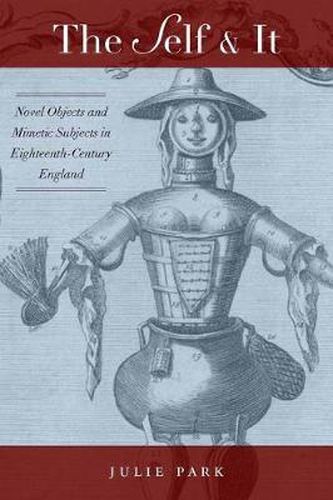Readings Newsletter
Become a Readings Member to make your shopping experience even easier.
Sign in or sign up for free!
You’re not far away from qualifying for FREE standard shipping within Australia
You’ve qualified for FREE standard shipping within Australia
The cart is loading…






Objects we traditionally regard as mere imitations of the human-dolls, automata, puppets-proliferated in eighteenth-century England’s rapidly expanding market culture. During the same period, there arose a literary genre called the novel that turned the experience of life into a narrated object of psychological plausibility. Park makes a bold intervention in histories of the rise of the novel by arguing that the material objects abounding in eighteenth-century England’s consumer markets worked in conjunction with the novel, itself a commodity fetish, as vital tools for fashioning the modern self. As it constructs a history for the psychology of objects, The Self and It revises a story that others have viewed as originating later: in an age of Enlightenment, things have the power to move, affect people’s lives, and most of all, enable a fictional genre of selfhood. The book demonstrates just how much the modern psyche-and its thrilling projections of artificial life -derive from the formation of the early novel, and the reciprocal activity between made things and invented identities that underlie it.
$9.00 standard shipping within Australia
FREE standard shipping within Australia for orders over $100.00
Express & International shipping calculated at checkout
Objects we traditionally regard as mere imitations of the human-dolls, automata, puppets-proliferated in eighteenth-century England’s rapidly expanding market culture. During the same period, there arose a literary genre called the novel that turned the experience of life into a narrated object of psychological plausibility. Park makes a bold intervention in histories of the rise of the novel by arguing that the material objects abounding in eighteenth-century England’s consumer markets worked in conjunction with the novel, itself a commodity fetish, as vital tools for fashioning the modern self. As it constructs a history for the psychology of objects, The Self and It revises a story that others have viewed as originating later: in an age of Enlightenment, things have the power to move, affect people’s lives, and most of all, enable a fictional genre of selfhood. The book demonstrates just how much the modern psyche-and its thrilling projections of artificial life -derive from the formation of the early novel, and the reciprocal activity between made things and invented identities that underlie it.